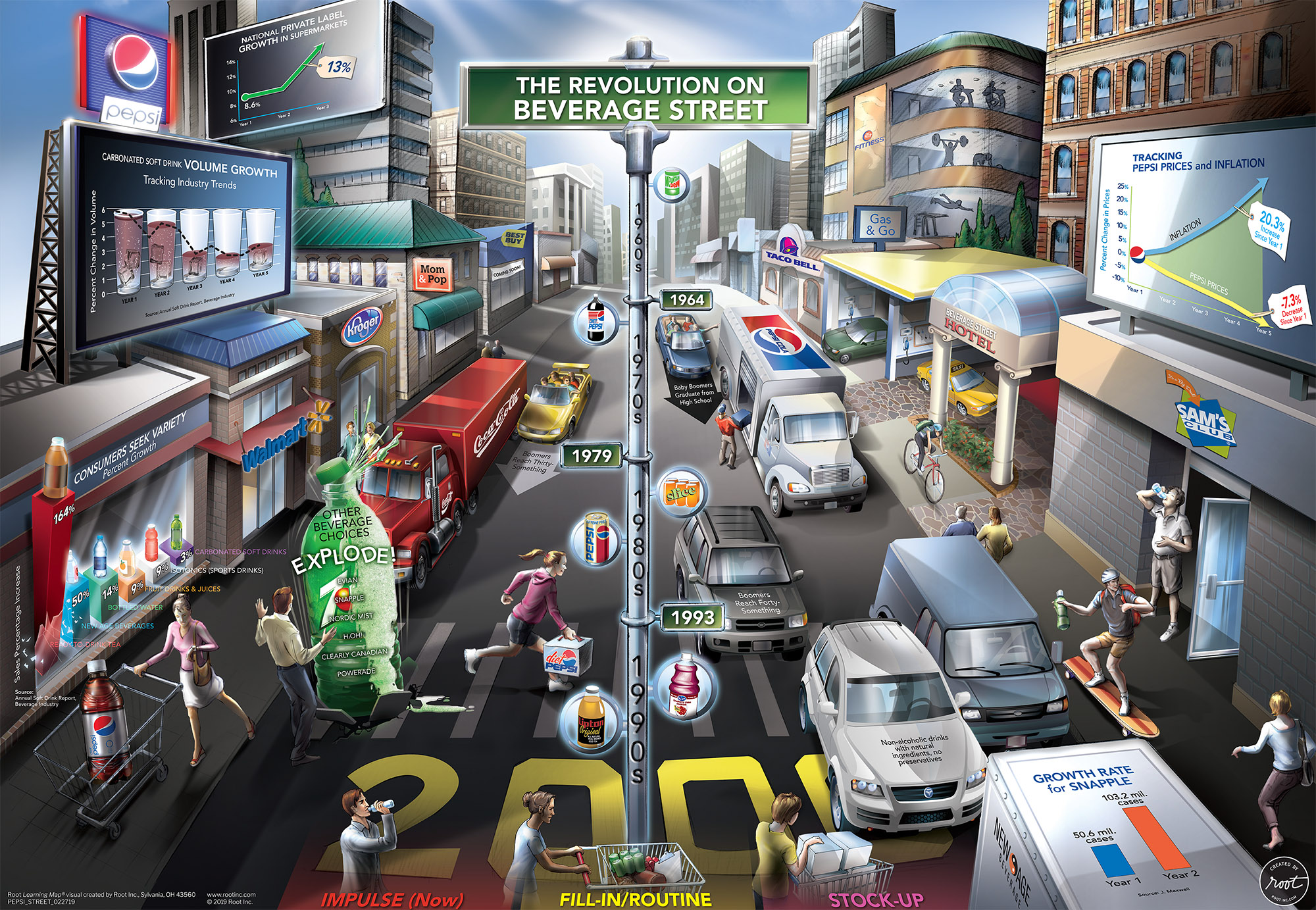The Future of Work is Here:
Four Mindset Shifts Leaders Must Make Now
We’ve experienced major changes in the world. These changes have forced organizations to reevaluate how people work. As we continue to reacclimate to the current conditions, many wonder if we’ll ever return to working like we did before the pandemic – and is this something we’d even want?
According to over 9,000 global workers surveyed by Accenture, the overwhelming response is that no, work as it was will no longer be part of the employee roadmap. What does this mean for leaders? Quite a lot. Dare we say that we’re on the cusp of a worker revolution? The rules of the past will stay in the past.
Here are four mindset shifts leaders must make today to determine what their people want, how to lead their organizations while engaging employees, and how to build a solid foundation to weather future storms.
1. Hybrid Environments + a People-First Philosophy
Hybrid or remote-work models, which allow employees to work from home either part of or all of the time, provide flexibility. They eliminate or reduce commute time. They offer opportunities to spend more time with family and friends and create a healthier work/life balance for employees.
It’s no surprise that most workers – 83% in fact – now desire a hybrid workplace. This contrasts sharply with data that tells us that most CEOs – also 83% – want their people back in the office.
But would a permanent shift to remote or hybrid work environments finally move the employee engagement dial in the right direction? Accenture data reveals that among employees working in a hybrid model, 42% would categorize themselves as “thriving.” If offering a hybrid work environment has resulted in 42% of workers feeling not just satisfied but thriving, what can employers do to further move that needle? And if we can help more employees thrive, what could this mean for engagement scores?
Can the changes forced upon the business world due to the pandemic be the catalyst to something better? Yes, because while it seems that working remotely benefits employees, it’s also good for organizations’ top lines. The U.S. Department of Labor tracked an average increase of 3.3% in worker productivity in the first two quarters of 2021.
Accenture’s “Future of Work” report tells us that those who worked under a hybrid model during the pandemic had better mental health, established stronger work relationships, and experienced less burnout than those who worked entirely on site or entirely remotely. Because hybrid-model employees faired so well, it seems they want to keep things as they are.

What can leaders do to maximize the positive effects of remote and hybrid work environments?
- Let how people work become more important than where they work. Leaders, it’s not about where people work. It’s about how people work. Great leaders will embrace a philosophy that unleashes people’s potential and enables them to be healthy and happy, regardless of where they work. It’s time to truly meet people where they are – physically and emotionally. If that means reimagining the traditional workplace and space, then that is the reality we must all embrace.
- Ensure that company policies make sense in today’s new world of work and are focused on people’s needs. Leaders need to adopt this mindset: policies should revolve around people, because your people are in the driver’s seat now more than ever. They’re setting the tone and the terms for many of your policies, including compensation packages. While this can put leaders in a precarious position in balancing the demands of new hires with those of current employees, what matters most is leveraging people’s skills in ways that match their compensation. Responsible leaders create environments in which they lead with a people-first mindset.
“Each member of the team must own the whole before their piece. They must sacrifice the area they represent for the overall good of the company.”

2. If We Don’t Each Own the Whole, We All Fail
Leadership is becoming much more complex and demanding. Today, leaders must have a holistic view of the business. To be successful, every leader in the business needs to care about other functions – not just about their priorities or budgets. A remote workplace makes this challenging; however, it’s essential to an organization’s success. When leaders have a better view of the biggest picture of the business, it makes it easier to pivot or adjust resources on their teams to ensure they’re operating in lockstep.
This means leaders also need to spend much more time (especially at the higher levels of the business) ensuring that they “connect the dots” for their people. Hybrid and remote work have made this a more time-consuming and critical task for leaders. When leaders keep their people informed on other aspects of the business, they’re helping them feel connected. This, in turn, empowers people to make better day-to-day decisions for the organization at large.
What can leaders do to ensure they own the whole picture and motivate others to do the same?
The key is for each member of the team to own the whole before their piece. They must sacrifice the area they represent for the overall good of the company. Easy to say, hard to do! Thinking together and acting together require leaders to relax their grip on the inclination to prevent their own area of the business from sliding down the priority list, but there are actions everyone in the business can take to help make owning the whole successful.
Here are two tactics to help leaders create connections among their people.
- Remove all silos. Leaders must wear many hats – more than ever – and become more interdisciplinary in how they work. For example, today we’re all the CIOs of our home offices – we’re making updates, adding new programs, and so on. Driving strategy in silos is untenable and won’t lead to growth or sustainable success. Leaders must be interdisciplinary in their mindsets and their leadership philosophies and should lead others to take a similar approach. Caring about the whole is more important than ever.
- Work harder to remain connected, especially when working apart. To be truly successful in a remote, hybrid, work-from-anywhere world, we need to compensate for the lack of in-person collaboration by being mindful of direct reports, peers, and counterparts. What do they need from their leaders to do their best work? What are leaders not aware of that’s creating a roadblock to their people’s success? Leaders must always be connecting the dots for their people. If folks only focus on their function, the whole will flounder. Everyone in the organization must think outside their unique perspectives and work in tandem to create an environment where people feel supported and connected.
3. Training and Development Must Be Rethought and Reshaped
The Accenture report “It’s Learning. Just Not as We Know It” advises that leaders “speed up experiential learning techniques, broaden individuals’ blend of skills, and ensure inclusive access to tomorrow’s skilling solutions.” In short, this means that leaders need to revamp their learning initiatives in the following ways.
- Move from classroom-style training to hands-on learning, as the power of “learning by doing” is significant.
- Emphasize the importance of focusing on complex reasoning, creativity, and EQ-focused skills.
- Ensure that the employees most likely to be negatively affected by future technological changes are offered training to gain the skills they need to succeed in the future.
These three points all lead us to the same conclusion: that the way we trained and supported employees in the past has to change. The models of the past can’t keep up with the current demand for skills and won’t satisfy future needs. We’re no longer holding all-company meetings where we debrief people on the new initiative or process we want them to adopt. Daylong, “one-way tell” training programs that take people offline for hours can’t yield the value they once did. In today’s fast-paced world, few people can focus that long, and few have the bandwidth to consume so much content over a stretch of many hours.
Most importantly, companies’ learning and development programs can’t focus solely on training people on new software or the latest processes. A strong contributor is someone who has a well-developed array of skills that are intellectual and emotional. People development must focus on total human needs. The capabilities that people need today in the work environment – no matter the industry – have significantly changed. The heightened need for people to have well-developed soft skills cannot be overlooked.

What can leaders do to ensure they’re helping people gain the right skills in the right ways?
- Ensure people are left “NBO.” According to Accenture’s report “Better to Belong,” the world around us is “constantly shifting… if leaders want to create an environment where people can thrive, they need to start by helping people feel like they belong.” Leaders need to strive to leave their people Net Better Off (NBO). Not only does this fulfill our human need to feel respected and valued, but it has major business benefits, too.
“Better to Belong” tells us that “leaders can unlock up to five times more human potential by better managing people’s everyday work experiences.” When people know they’re important to the organization’s success – when they feel NBO – they’ll care more about working with their peers to help move the organization toward reaching its goals.
- Put a renewed focus on soft-skill development. Leaders at all levels must ensure people are developing both hard and soft skills – most specifically, empathy, emotional support, and critical thinking. In the past, leaders largely left development in the hands of HR and training. That can no longer be the case, particularly in light of the massive changes the workforce is currently undergoing. Every single leader needs to ensure they’re coaching and developing their people. Most importantly, leaders need to model the same capabilities and behaviors that they require from their people.
Mastering only technical skills will not be sufficient. Leaders must prep employees for continued employability by giving them opportunities to upskill based on changing business and environmental shifts, as intelligent technologies will undoubtedly continue to shift our way of working in the years to come. People need to be preparing for these changes now.
“Mastering only technical skills will not be sufficient. Leaders must prep employees for continued employability by giving them opportunities to upskill based on changing business and environmental shifts.”
4. Leaders Need to Be Connected to Employees’ Well-Being
The need for leaders to have a stronger connection to their people is not new. However, it’s no longer “nice” if a leader has an accurate insight into people’s actions and feelings beyond the C-suite – it’s now a critical part of leading a successful business.
Today’s employees demand that their leaders care not just about their productivity but also about how they feel. This requires leaders to move out from behind the desk and truly “walk the walk” to gain a real understanding of what people are dealing with every day. And with the many variables of work in 2022 – with employees working on site, remotely, and in hybrid environments – leaders must do more than ever to gain awareness of what their people are doing and feeling.

What can leaders do to support their people's well-being?
When a leader has a real understanding of their people, they can become champions of their workers’ well-being and can better support peoples’ emotional and mental needs. Accenture’s “Care to Do Better” report tells us that if leaders “champion workforce well-being and quality,” 94% of people will put significantly more effort into their work. This is an overwhelming majority, yet only 17% of organizations claim to lead in this practice.
Leading effectively today isn’t easy. Although it’s not just about ROI or the bottom line, understanding employees and creating a workplace where they want to be is critical to being successful in both these areas. That’s why leaders today can’t just excel at creating a business plan or rolling out a new product. They must take emotional and mental well-being into consideration, too.
Change Isn’t an Indictment of the Past
The future of work centers on making organizations more agile and reinventing the employee experience to focus on digital technology – all to create a more productive, adaptive workforce. With the incredible ways in which technology at work has changed in the past 2 years – in tandem with extraordinary social shifts and the fact that organizations were forced to become more agile or face failure – there is little doubt that the future of work is happening right now.
This means that the way leaders once led probably no longer works. Leaders must remember that the changes they’re making aren’t indictments of the past. The ways we work, lead, collaborate, hire, and train are different now, and that’s okay.
Organizations that will find success in 2022 and beyond are the ones led by a C-suite that views the hybrid workspace as the ideal scenario; that considers people before policies, focuses on giving people the skills they need to excel in our new world, and establishes connections that prove to people that their emotional and mental well-being is a priority. How do your leaders stack up?







